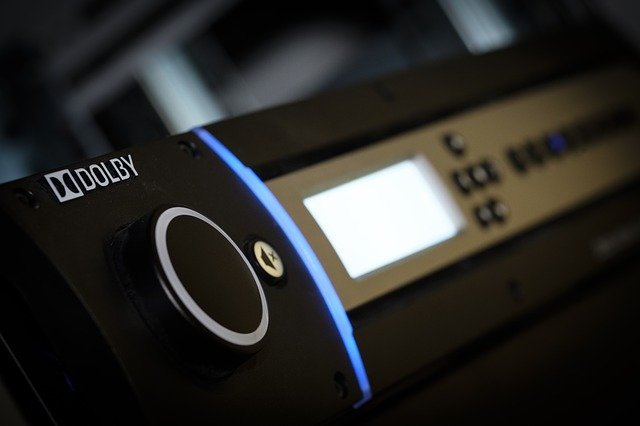It all started in the 1960s with a sound compression and expansion system that reduced the level of background noise in film recordings.
Since then Dolby Laboratories has developed many innovative technologies, which have brought the reproduction of audio and video to a qualitatively new level. For high-level sound during gameplay, we recommend you check out our list of the best PC gaming headsets under 100. And we’ll go back to Dolby and find out why this firm has become the most recognizable in the world.
The birth of sound: Dolby Stereo and Dolby Surround
Dolby began in 1965, when the scientist Ray Dolby decided to devote himself entirely to sound and create his own business. One year later the young company launched its first product on the market – the A-Type professional noise cancellation system. Three years later was released the improved version – B-Type – already for the consumer market. The system was really unique for that time and soon the first cassette recorders equipped with it appeared. The next technical breakthrough was Dolby Stereo, which was a practical format for recording 4-channel sound on 35-millimeter tape. In 1977, Close Encounters of the Third Kind and Star Wars were released – both films had sound recorded in Dolby Stereo format. The tremendous success of these premieres also greatly contributed to Dolby’s entrenchment of the technology in the marketplace.
And when Lucas announced that the next movie from the movie saga will be shot in the same sound format, the Dolby Stereo technology began to be actively installed in theaters throughout the United States. A key feature of this system was its backward compatibility – the same phonogram could be played everywhere, from an old movie theater with monaural sound to a theater equipped with Dolby Stereo, thus eliminating the costly inventory of multiple tapes.
The success of Dolby Stereo led to the eventual abandonment of magnetic phono on 35mm film. Since then, magnetic sound has only been used on 70mm copies.
As early as 1982, Dolby introduced the Dolby Surround format, which was an adapted version of Dolby Stereo for the home market.
In 1987, CBS channel for the first time broadcast Super Bowl XXI in Dolby Surround format.
Dolby key technologies
Dolby Atmos
An audio system in which sound objects can be precisely positioned and moved in three-dimensional space, including the area above the viewer’s head.
It brings what’s happening on the screen to life and creates amazingly powerful, rich sound for a fully immersive experience.
Dolby Vision
HDR technology that delivers incredible brightness, accurate color, contrast and saturated colors, and dynamic metadata makes every frame look more realistic and detailed.
This format gives content creators more control over what HDR imagery will look like on your TV or mobile device.
Dolby Audio
An entire family of branded technologies that includes the company’s solutions for delivering high quality audio to all home and mobile devices.
This segment also includes Dolby Digital (AC-3), Dolby Digital Plus (E-AC-3), Dolby True HD, Dolby AC-4, and other audio codecs)
Dolby Audio also includes end-device audio processing solutions that use algorithms for surround sound virtualization, volume control, frequency correction, and speech intelligibility.
Dolby Audio ensures that the device’s speakers are used to their full potential.
Dolby Voice
Dolby Voice greatly enhances audio and video conferencing with incredibly clear and natural sound for a realistic, productive long-distance experience.
Dolby Voice enhances long-distance communication by providing innovative audio technology that makes the experience more realistic and more like a face-to-face meeting.
Dolby Cinema
A premium cinema that combines the most innovative sound and image technologies – Dolby Vision laser projection system and Dolby Atmos moving sound – along with great interior solutions inspired by the latest technologies.
Dolby Cinema makes every trip to the movies an absolutely thrilling experience.
Company Now
Dolby has been delivering an entirely new cinema experience in theaters and at home for over 50 years.
Today, Dolby technologies are used in movie theaters, professional recording studios, consumer electronics devices, audio and video receivers, the video game industry, mobile content, digital television, and digital cable and satellite systems.
Sound is a very important part of all content, it can make you feel, laugh or cry. And Dolby is committed to bringing that emotion to people and taking the entertainment industry to the next level of technology.




